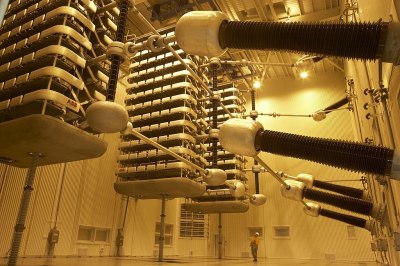Trouble With The Texas Power Grid as Cold Weather Boosts Demand, Knocks Out Generators
It comes as something of a shock that residents of the Lone Star State are suffering from rolling power blackouts in the face of an unusually severe winter. First off, winter in Texas? Second, isn’t it the summer head waves that cause the rolling blackouts in that region?
Were you to mention Texas to a European, they’d maybe think of cowboys, oil, the hit TV show Dallas, and if they were European Hackaday readers, probably the semiconductor giant Texas Instruments. The only state of the USA with a secession clause also turns out to to have their own power grid independent of neighboring states.

Surely America is a place of such resourcefulness that this would be impossible, we cry as we watch from afar the red squares proliferating across the outage map. It turns out that for once the independent streak that we’re told defines Texas may be its undoing. We’re used to our European countries being tied into the rest of the continental grid, but because the Texan grid stands alone it’s unable to sip power from its neighbours in times of need.
Let’s dive into the mechanics of maintaining an electricity grid, with the unfortunate Texans for the moment standing in as the test subject.
Combination of Coal, Natural Gas, Nuclear, and Wind Power Generators Knocked Out by Cold
If a power grid was as simple as a collection of generating stations connected full-time to a constant load, its running would be a relatively straightforward affair of shoveling some sort of fuel in at one end and receiving the benefit of the electricity at the other. Sadly the reality of powering a human population is never so predictable, and the grid utility plays a constant game of anticipating variable demand in order to match it with generating capacity. Entire power stations exist with the specific application of providing near instantaneous extra power — you may remember our reporting on UK’s Electric Mountain. Grid strategists make it their business to predict our actions as they relate to power use down to the minute.
Since Texas has blistering hot summers they are used to their periods of peak load happening as Texans turn on their air conditioning en masse, with the relatively mild winters in a state bordering the Gulf of Mexico providing little stress to the system. But here we have a perfect storm of energy facilities closed by the weather being unable to cope with the extra demand has Texas turn to electric heat to keep them warm.
Their current cold snap has replaced the relatively balmy with the frozen Arctic, causing ice storms that have halted half of the wind power generation for the state as of Sunday morning. According to grid operator Electric Reliability Council of Texas (ERCOT), the majority of the generation plants that were knocked offline by the cold beginning on Sunday were a combination of gas, coal, or nuclear energy. (Outages in Mexico were also reported due to frozen natural gas pipelines incoming from Texas.) While wind power did make up a quarter of Texas’ power generation in 2020, those turbines are reportedly not run at full capacity during the winter months.

In times of need, can you borrow a cup of energy from a neighbor? Continental North America has two large power grids, one on each side of the Rockies, and a few smaller grids of which the Texas Interconnect is one. The reason for its existence is historical, and in part its continuation is because as a single-state entity it is not subject to some Federal or international (with Canada) regulations. It has some relatively modest DC interconnects with its neighbours, but they are not of sufficient capacity to allow generators in warmer states to take up the slack. There is an ambitious plan for a much larger DC interconnect project to link both the Eastern and Western grids with the Texan one, which in turn gives us a chance for a look at how grids are synchronised.
Phase Sync Makes Connecting AC Grids Tricky

Connecting two AC electricity grids is not simply a case of wiring them together, as their AC frequency and phase must both match exactly in order for a connection to work. The Texas grid has the same nominal frequency of 60Hz as its neighbours, but in practice there will be a slight difference in frequency and phase that can not be reconciled without the impractical step of powering down the entire state and restarting all its generators in synchronisation. The solution when transferring power between grids is therefore to convert it to DC for the intermediate stage, then back to AC at the correct grid frequency and phase. Many undersea cables such as those linking the UK, Scandinavia, and continental Europe take this approach, meaning that those grids are linked for the purpose of trading power but not synchronised. Thus when in 2018 a political stand-off in Kosovo caused a load imbalance that sent Europe’s grid frequency into a downward spiral, the British grid was unaffected. This is how the ambitious American grid interconnect mentioned earlier is slated to work, with DC links from all three grids meeting in New Mexico with a superconducting cable interconnect for an extra efficiency boost.
Electricity at the scale in which most Hackaday readers encounter it is a cinch to manage with a switching regulator here and there or maybe even a breaker or two in low-power mains circuits. At the scale of a grid, a country, or a continent though it enters an order of magnitude in which a single semiconductor switching device can be the size of a small house, and engineers must concern themselves with not only the matters of power handling but also human behaviours and geopolitics. If you’re a Texan Hackaday reader hunkering down for a cold spell then you have our sympathy and best wishes for a speedy thaw, and meanwhile for the rest of us it’s worth remembering that it could just as easily happen anywhere else.
Header image including USA map, Wapcaplet, CC BY-SA 3.0.
Post a Comment